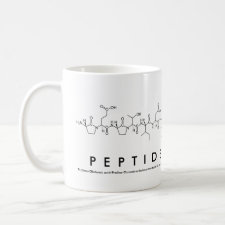
Authors: Oyama T, Kakiyama T, Kushida N, Saito K, Kikuchi K, Tomoi M
Article Title: Polymer catalysts from "sequence-conformation imprinting" with N-acryloylpeptide monomers.
Publication date: 2006
Journal: Polymer Preprints, Japan
Volume: 55
Issue: (2)
Page numbers: 3865-3866.
Abstract: Polymerization of monomers with various interactions in the presence of TSA at the temperature where the interactions are not destroyed is expected to afford a polymer in which the information of TSA is imprinted as the monomer unit sequence and the conformation. In this study, we tried the realization of the "sequence-conformation imprinting" by photo-initiated radical polymerization of N-acryloyl peptides and a small amount of crosslinker in the presence of p-iodophenyl methylphosphonate as a TSA for hydrolysis of p-nitrophenyl acetate (AcONp). The rate of the hydrolysis of AcONp in the presence of the imprinted gel was 2.1 times and 3.8 times higher than those in the presence of the non-imprinted gel and without gel, respectively. The results from inhibition experiment with TSA and hydrolysis of p-nitrophenyl caprylate also showed that formation of more effective TSA-complementary sites in the imprinted gels
Template and target information: TSA, p-iodophenyl methylphosphonate
Author keywords: hydrolysis, N-acryloylpeptide, Sequence-conformation imprinting, Transition state analogue (TSA)



Join the Society for Molecular Imprinting

New items RSS feed
Sign-up for e-mail updates:
Choose between receiving an occasional newsletter or more frequent e-mail alerts.
Click here to go to the sign-up page.
Is your name elemental or peptidic? Enter your name and find out by clicking either of the buttons below!
Other products you may like:
 MIPdatabase
MIPdatabase









